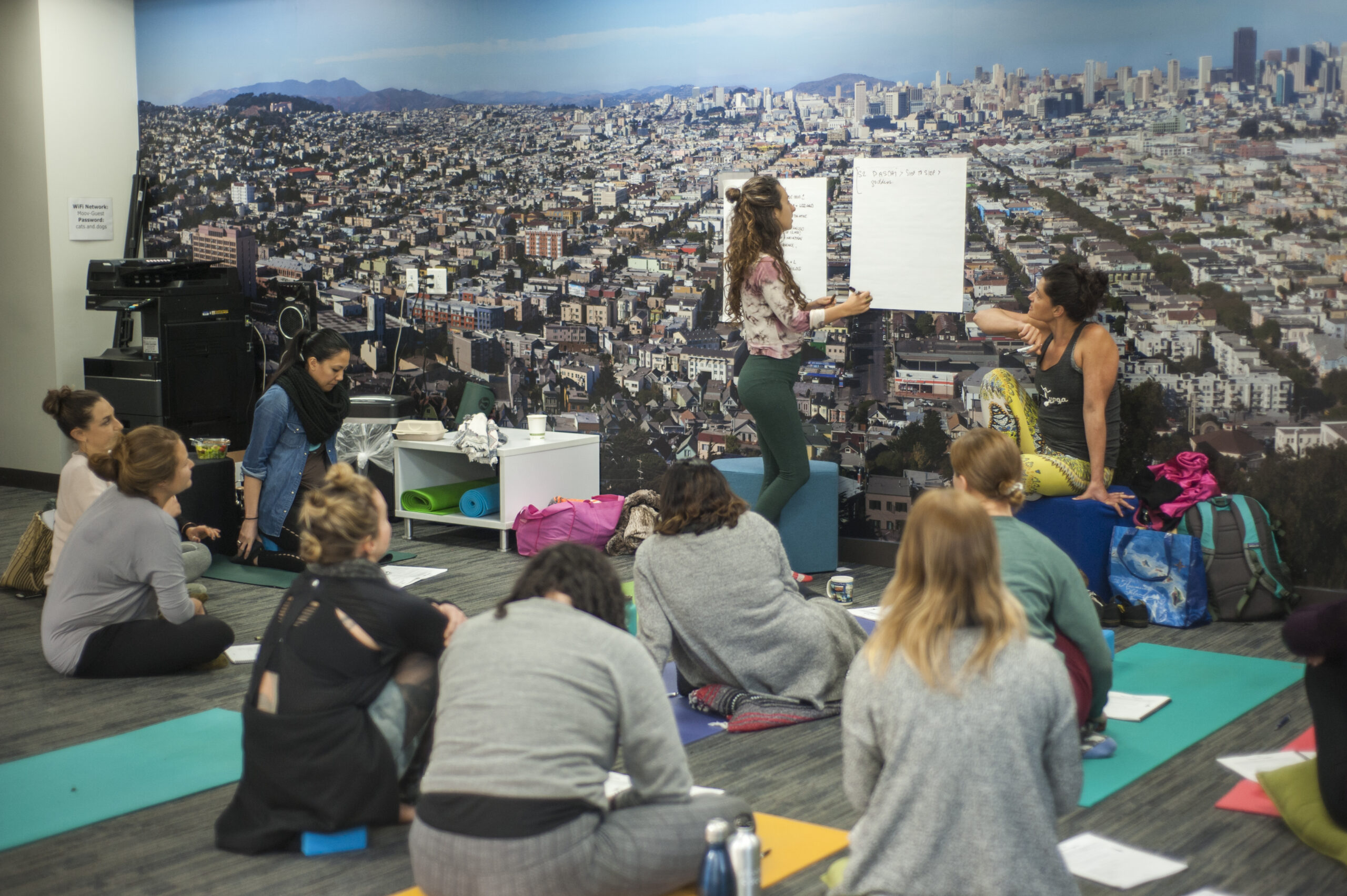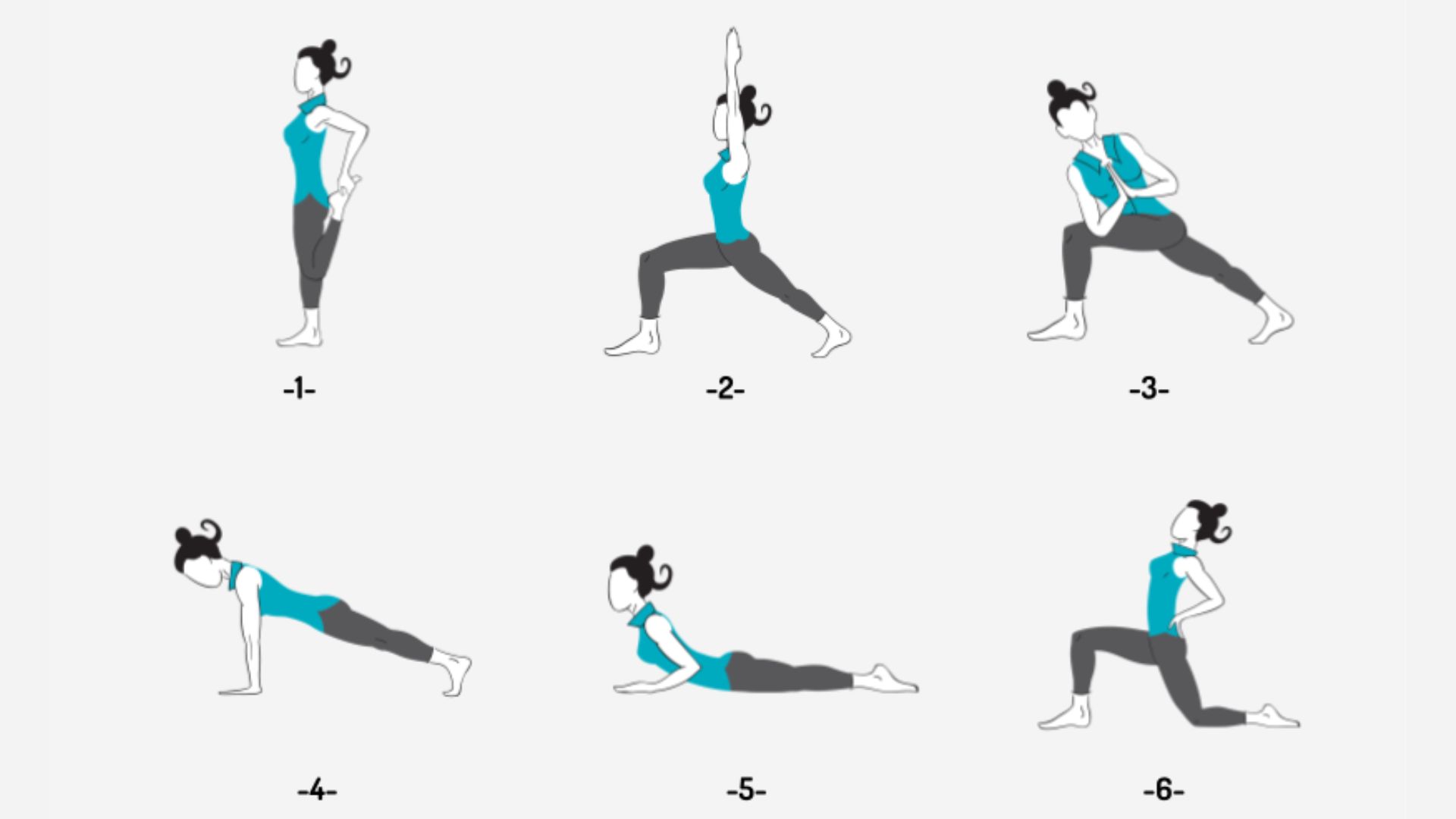5 Lessons for New Corporate Yoga Teachers

Becoming a corporate yoga teacher, a growing trend worldwide, may not be the obvious first step for many yoga teachers. However, teaching corporate yoga presents a unique growth and career development opportunity. Having worked with numerous corporate yoga teachers in our Office Yoga Training, I’ve witnessed their aspirations to teach yoga full-time or diversify their teaching career with a more sustainable option. Most enthusiastically embark on this journey, embracing the new practices they’ve learned. Here are five lessons for new Office Yoga teachers.
1. Know Your Audience
Corporate yoga teachers require a different skillset than studio yoga teachers. Teaching corporate yoga often involves adapting traditional yoga practices to suit the office environment and the needs of employees who sit for long periods. Employees are less likely to join an hour-long flow-style class that requires mats and yoga clothes and are more likely to join a brief desk yoga session, which they can do in their office attire. There are many ways in which teaching corporate yoga differs from teaching studio classes. The greatest differentiators include the office environment, time constraints, class formats, and accessible language.
Ultimately, all settings aim to promote physical and mental well-being. Still, corporate yoga instructors must be more adaptable and creative to cater to an office environment’s specific needs and limitations.
2. Plan Your Sequences in Advance

As a corporate yoga teacher, leave as little chance for error as possible, especially when you are first starting. Planning your sequences gives you a sense of security in your abilities as an instructor. Many factors can throw you off, especially the time constraints, so write the sequence on paper and bring it to class when you teach. The act of writing also helps with memorization, which leads to a natural flow of instruction.
In Office Yoga Training, we practice teaching, and I feel at ease when I see a teacher with notes because I know they’ve prepared in advance. They know which poses they will do, with options to add if there’s more time or cut something out if there’s less time. If you’re teaching virtually, set up your camera and space beforehand, ensuring your whole body is in the frame. Choose what you want to wear the day before, so it’s less to think about the day of the event. Generally speaking, instructors who plan have clearer instructions and smoother transitions, and their personalities come through more authentically.
3. Ask for Feedback After Class
Performance reviews are a normal practice in the corporate world, and asking for feedback can provide valuable insight. If you can step into humility and incorporate the feedback you’re given, success in teaching office yoga will come faster. A feedback form with a few simple questions will suffice. Here are some questions you can ask your office yoga clients:
- Were instructions clear?
- Was this practice challenging?
- Did you want more direction on something?
- Did you feel safe?
- What did you like most about the class/series?
- What could we do differently to make your experience better?
Keep the feedback anonymous so participants can respond honestly. Include a question or two about what participants enjoyed to pinpoint your strengths (pro tip: feedback can also be a form of collecting testimonials to share with prospective clients!). Don’t be afraid to send a feedback form and implement the necessary changes for improvement.
4. Say Yes to Opportunities
There’s a fine balance between working smart and making the most of opportunities. Whenever possible, say yes to opportunities that interest you. In San Francisco, where I live, the iconic Stern Grove Festival happens every summer. The Director of Stern Grove approached me and asked if we could provide yoga before the concerts during the summer. Concerts aren’t corporate offices, but the opportunity sounded interesting, so I said yes! We worked together for two seasons and 20 concerts. Through that partnership, I learned how to work public events, manage large crowds, and teach yoga in front of a 6,500+ person audience.
Teaching always offers something to learn; every opportunity can give insight into your niche and how you want to grow as an office yoga teacher. Remember that you must embrace opportunities for yourself as a teacher, so if something isn’t exactly what you want but sounds interesting, try it out anyway.
5. Don’t Lose Your Beginners Mindset

As we establish ourselves in our teaching careers, we can easily lose sight of our beginner’s mindset. Do everything in your power to keep the teacup empty. I’ve been teaching for 15+ years, and I’m still learning. Whenever I feel uninspired in my teaching, I go out of my way to read a book, take a class with a new teacher, or sign up for a course I’m interested in. As a leader, I’ve implemented monthly Integration Sessions for the Office Yoga graduates. The goal is to keep the beginner mindset’s momentum and provide teachers with opportunities to ask questions and share best practices. Even as professionals, we never want to stop learning. Learn to ride the waves of change and embrace a beginner’s mind.
As a new corporate yoga teacher, know your audience, prepare sessions in advance, ask for feedback, say yes to interesting opportunities, and keep learning. The corporate world needs practices like yoga and meditation, and leaders seek accredited teachers. Follow your curiosity and begin your journey into teaching office yoga today.

Relevant and correct article. Hope I can start this business in Los Angeles.